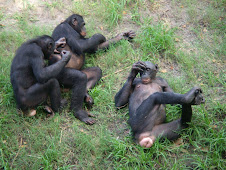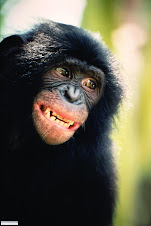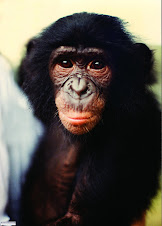 This female jaguar, Zassi, is enjoying a fish embedded Popsicle at the Jacksonville Zoo and Gardens. She is wild-born, on loan from the country of Guyana, South America, and extremely important to the Species Survival Plan (SSP) population. She had a single male offspring on the first of January, 2009, and if he breeds, Zassi will be a "founder." Ideally, she will need to produce four offspring that all contribute offspring, thus, mathematically, 93.75% of her genetic material will pass on to the captive population.
This female jaguar, Zassi, is enjoying a fish embedded Popsicle at the Jacksonville Zoo and Gardens. She is wild-born, on loan from the country of Guyana, South America, and extremely important to the Species Survival Plan (SSP) population. She had a single male offspring on the first of January, 2009, and if he breeds, Zassi will be a "founder." Ideally, she will need to produce four offspring that all contribute offspring, thus, mathematically, 93.75% of her genetic material will pass on to the captive population.The Jacksonville Zoo and Gardens has a long history with jaguars, including the prolific Zorro, a black male from the early seventies, who passed on his melanistic gene into the population. (All black jaguars in this country can be traced back to Zorro.) In 1998, the zoo imported 1.2 (one male and two females) jaguars from Venezuela. This was the first time wild-born jaguars had been brought legally into the US in well over a decade.
At that time, the scientific community believed that there were at least three and maybe four different subspecies of jaguars represented in Venezuela. The Zoo was very careful to select three animals that originated from the same part of the country (the Llanos), so that they would be "pure."
Unfortunately, the male had no interest in breeding and there have been no offspring from any of the Venezuela cats. As it turned out, the efforts to identify animals from one region were not necessary. Newer DNA evidence shows that there are eight subspecies of jaguar and only one from Venezuela: Panthera onca onca.
The two surviving Venezuelan jaguars are too old to breed naturally, but the Zoo has not given up on them. The veterinary department has been collaborating with scientists on artificial insemination and in vitro fertilization. This cutting edge research is providing answers to many questions about the reproductive physiology of the jaguar.
Photo by D. Bear-Hull






















